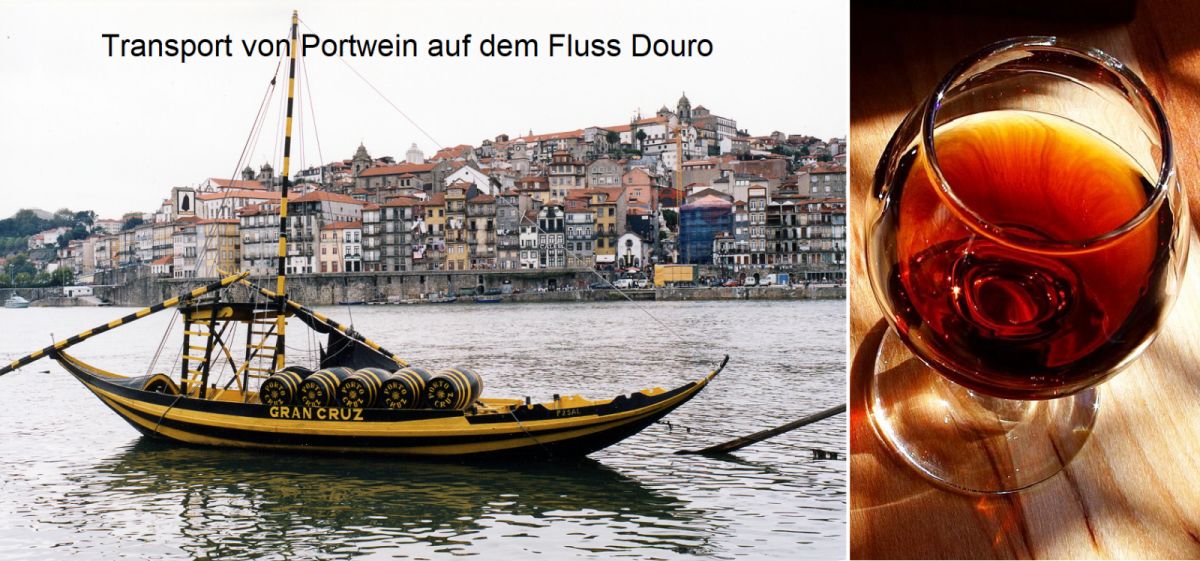Abbreviation for Instituto da Vinha e do Vinho, the national authority responsible for viticulture in Portugal; see there.
Portugal
The semi-presidential Republic of Portugal with its capital Lisbon(Lisboa) on the Iberian Peninsula in south-west Europe covers 92,212 km². The country is bordered to the west and south by the Atlantic Ocean and to the east and north by Spain. The national territory also includes two island groups in the Atlantic. These are the Azores (2,351 km²) 1,369 km west of the mainland and Madeira with Porto Santo (801 km²) 951 km from the mainland and 737 km from the coast of Africa(Morocco).

History
In ancient times, Phoenicians, Greeks and Romans brought vines to the Iberian Peninsula. Although viticulture stagnated under the long Moorish rule from the 8th to the 12th century, it did not come to a complete standstill despite the ban on alcohol. As in many other countries, the Roman Catholic monastic order of the Cistercians had a decisive influence on viticulture, founding 18 monasteries in Portugal in the 12th century. King Dinis (1279-1325) promoted agriculture and viticulture to such an extent that a merchant fleet could be built up with the proceeds.
The Kingdom of Portugal initiated the Age of Discovery in the 15th century. Under the Avis royal dynasty, especially Emmanuel I (1469-1521), Portugal rose to become a leading European trading and maritime power and created the first and one of the largest colonial empires with extensive possessions in Africa, Asia and South America. In the colonies, the introduction and planting of European vines had a significant influence on the development of viticulture. Muscat and Malvasia grapes were planted on the island of Madeira. A flourishing wine trade with England developed.

Port wine
Portugal's most famous wine is port. Its great triumph began when the Methuen Treaty was signed between England and Portugal in 1703. This provided for large tariff reductions for the import of Portuguese wines. As early as 1756, the Prime Minister Marquês de Pombal (1699-1782) laid down precise demarcations for the Douro region. Alongside Chianti, this was one of the very first areas to be controlled in terms of origin.
The Factory House, opened in 1790 in Porto, where the British factors negotiated their business, played a special role in the port wine trade. A wine similar to port is Madeira from the island of the same name in the Atlantic. Big export hits with 40% of the total volume are the rosé wine Mateus from the Sogrape company, created in 1942, and similar products such as Lancers from the Fonseca company. With a share of over 50%, Portugal is the world's largest producer of cork stoppers.
Soil & climate
The elongated country has a wide variety of soil types from north to south as well as a very different climate with continental and Mediterranean influences and sometimes extreme fluctuations in summer and winter. In the cool, rainy and fertile north of Portugal, fresh wines that can be consumed rather quickly grow on barren, sandy granite soils. In the Minho region, it can rain almost every day, while the left bank of the River Guadiana in the Alentejo or parts of the Douro region often have to go many months without a drop of rain.
The climate in the Alentejo and Dão areas varies between Mediterranean and continental with large temperature fluctuations between day and night as well as summer and winter. The areas of Bairrada and Colares are influenced by the Atlantic Ocean with extreme climatic fluctuations with lots of rain and cool temperatures. The climate in the central agricultural heartland is mild all year round. It has mineral soils interspersed with gravel and benefits from its location on the River Tagus. In the far south, the climate is hot and 50% of cork production comes from here.
Regions & growing areas
Viticulture is practised throughout the mainland and to a significant extent on the two archipelagos. In the 19th century, most of Portugal's vineyards were destroyed by mildew and phylloxera. Reconstruction only began in 1930. After the end of the dictatorship in 1974, the switch from the production of cheap mass-produced wines to quality products began. Viticulture is an important economic factor in Portugal, as around 15% of the population live from it.
Alentejo
- Alentejano (IGP)
- Alentejo (DOC)
- Borba (DOC)
- Évora (DOC)
- Granja-Amareleja (DOC)
- Moura (DOC)
- Portalegre...
Voices of our members

The Wine lexicon helps me to keep up to date and refresh my knowledge. Thank you for this Lexicon that will never end in terms of topicality! That's what makes it so exciting to come back often.
Thorsten Rahn
Restaurantleiter, Sommelier, Weindozent und Autor; Dresden